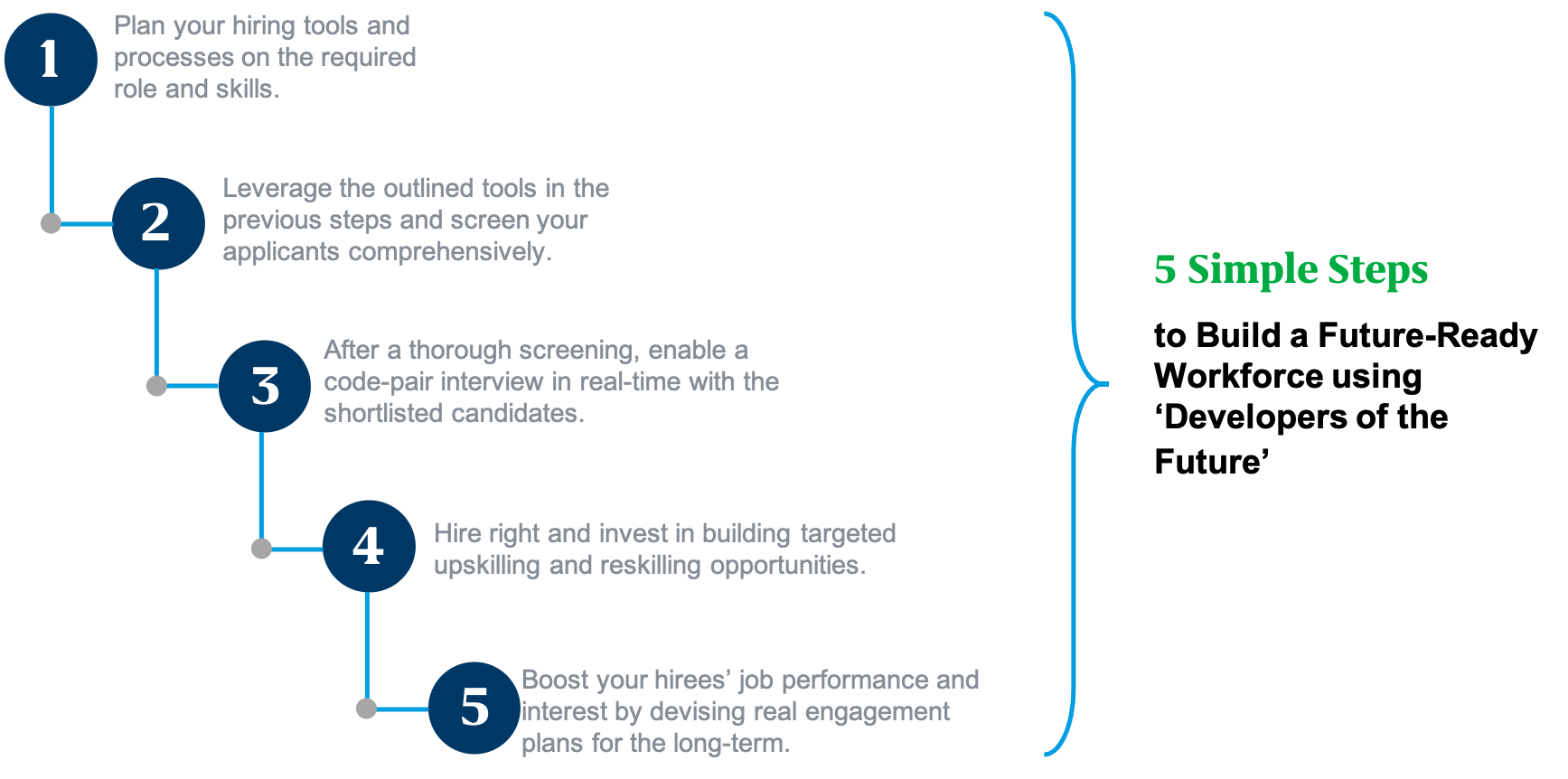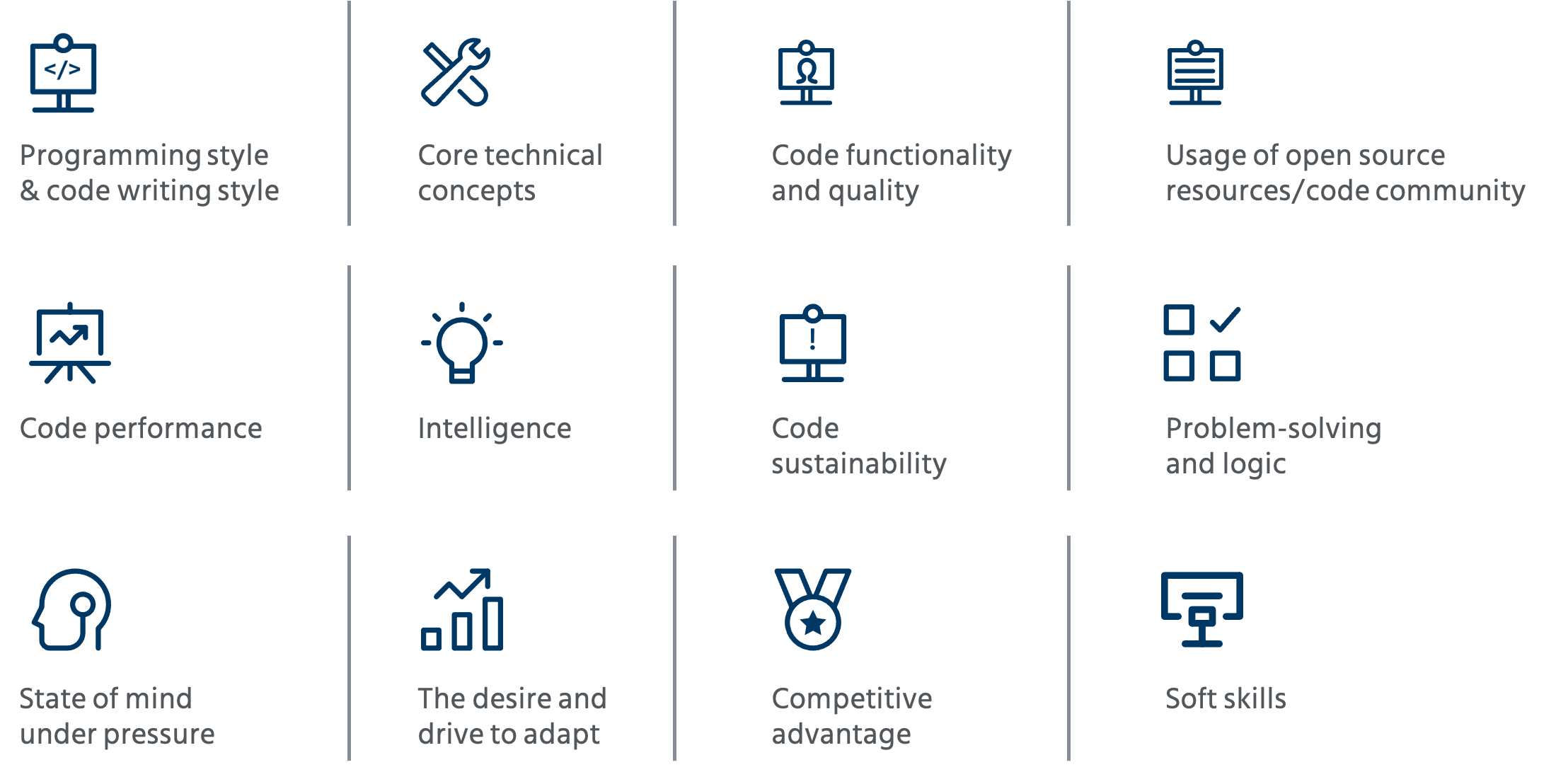Let’s take a use case: Considering you are bulk-hiring freshers through campus placements, how do you identify quality coders? Also, how do you figure the right tool for the process?
Here’s a three-step approach to filter out the best from the rest in no time.
a) Quick Filtration: Round 1
Candidates often exaggerate their abilities and proficiencies in resumes to create a pleasing impression. When recruiters hire in bulk, they are hard-pressed for time to validate such claims. Hence, an all-inclusive virtual tech recruiting platform, offering a vast repository of coding aptitude questions, addresses such concerns. You can choose from a set of readily available standardized tests from its enormous library of programming assessments. Or you can choose to tailor-make pre-hiring assessments matching organizational objectives to explore candidates’ desired skillsets without bias.
b) In-depth Analysis: Round 2
Coding aptitude aside, it is equally relevant to possess knowledge and expertise in a language or technology. Hence, the second step entails utilizing role-based coding simulators. This online programming test assesses a candidates’ coding proficiency in general programming languages. Mercer | Mettl’s simulator offers recruiters the liberty to test real coding skills in any number of programming languages. With real-world challenges at play, the simulators provide a real sense of a student’s or a fresher’s project building abilities.
c) Online Interviews: Round 3
Leveraging the best online coding interview tool will lend unparalleled ease to the recruitment process, regardless of the number of candidates. With a shared live development environment, amplified by audio, video and chat functionalities, hiring managers can enable online coding tools for interviews, such as pair programming interviews, to assess skills in real-time and make quality decisions on tech candidates.
Did you know? One of the world’s largest companies, Google, analyzed five years’ interviewing data to reduce its time-to-hire.
Step 2 – Screen your applicants comprehensively
The output of Step 1 has outlined a complete hiring plan with details of the role for which you’re hiring and the assessments and tools you will administer for the position. Now you need to implement that plan in Step 2. You must put Step 2 into perspective by choosing a seamless tech hiring platform to administer your screening tools effectively and virtually.
An efficient online programming platform is a comprehensive and user-friendly technical recruitment platform that offers an easy-to-use interface for the candidate and the assessor alike. This efficient platform establishes which tech candidates have the right skills and the ability to perform the desired job. It minimizes hiring time and maximizes value for the next round.









 Behavioral Competencies
Behavioral Competencies Cognitive Competencies
Cognitive Competencies Coding Competencies
Coding Competencies Domain Competencies
Domain Competencies




































Would you like to comment?